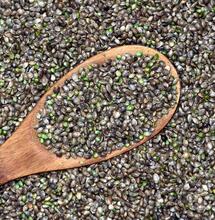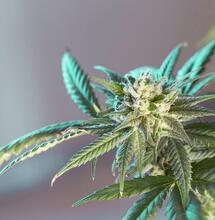Better Buds with Mr. Bill: Mixing Nutrient Solutions Affects Cannabis Yield

Mr. Bill, our plant fix-it guy, cautions that the method you use to make your nutrient solution is directly responsible for your yield.
Mr. Bill, our plant fix-it guy, cautions that the method you use to make your nutrient solution is directly responsible for your yield.
Mr. Bill is ready to assist you by drawing upon over twenty-eight years of active grow shop experience - including answering growers' questions about the hydroponic industry. Before Mr. Bill opened his first store he worked in the agricultural industry for five years, growing tobacco.
Plants are living organisms and will adapt to their surroundings - as long as these adaptations are done over time. Plants that establish themselves into poor growing regions are either very hardy plants or have adapted themselves to the region over many years.
Making nutrients is very easy, correct? You simply pour all your ingredients into the proper amount of water and set the pH, then feed your plants: yes or no? 'No' is the proper answer; yes, you have made a nutrient solution, but are the mineral elements available? Maybe. Is the pH going to stay stable? Perhaps. Are the plants going to get enough food? Possibly. So, just how do you mix a perfect nutrient solution?
|
Carriers across the root cells |
Water Quality
Firstly, we have to know our water source; we want water that contains a low mineral content. If your water comes from a well, the odds of it being good can be tricky. Well water changes as the season changes - for example, a dry season could lead to a shortage of water and the dissolved minerals will become more concentrated, causing poor water quality. Well water with a steady supply does not allow for the minerals to be built up within it. Lake or river water also changes throughout the season; if untreated, the bacteria will become more established further into the warmer weather. Bacteria multiplies faster with temperatures over seventy-five degrees (F) and temperatures over 104° F kills most bacteria (this is why the recommended temperature for hot tubs is 104° F).
Establishing Water Volume, Mixing and Measuring
Let us start from the beginning. I trust that you have a container, besides the reservoir, for the nutrient solution - one for which you know the volume of water. If you do not trust your knowledge of where the 'full' mark is, then weigh out the water. Either 20,000 grams or twenty kilos of water is twenty liters of water; fill a larger container with this measured water and mark the reservoir as you fill it up. Once you have established the proper volume of water, we can start. Fill the container and remove about four liters of water per hundred liters.
Have all products nearby that you want to use to make up your nutrient solution. Also, make ready a dedicated measuring device for each product that you are going to add to your reservoir; this prevents contamination of each product, as contamination can cause a lock-up of minerals, making them unavailable to your plants.
|
This mineral wheel depicts the relationships between common elements |
Preventing Reactions and Maintaining pH
Measure the pH of your water. Let's say you have a pH of 7.5; add the correct amount of B nutrient, stir the water vigorously to distribute the concentrated nutrient into the water. While the water is still moving vigorously, add the correct amount of A concentrate solution, slowly allowing it to disperse into the volume of water. This prevents a reaction between the B and A solutions. Measure the pH of this solution; your pH should have fallen about one full pH point to 6.5. Check the water for any white discoloration, which is a precipitation that has locked up your nutrients. Nutrient solution that is heavy white or cloudy-colored should not be used. Rebuild, employing the following tips.
Discoloration
If you have additives or boosters to add to your nutrient solution, add the ones with less color disruptions, such as humic (very black), last. This will allow you to see any discoloration as it develops. Check the pH before feeding anything to your plants; for vegetation, set pH to 6.1 and for flowering, either 5.7 or whatever the nute manufacturer recommends for each stage of growth.
Problem Water
If you see a whitish hue to your solution, you will need to mix your nutrients a little differently. Again, measure the pH of your nutrient solution. Since you built the previous nutrient solution, you already have some of the required information (a pH of 7.5 with a drop of one full pH point to 6.5). Adjust your numbers according to the pH you need; for example, if for flowering - since it has the bigger pH swing - we know that the pH dropped from 7.5 to 6.5 and we needed to lower the pH to 5.7 (the difference between 6.5 and 5.7 is .8 pH). Now adjust the water in the reservoir from 7.5 to 6.7, which is the difference. Once you add the same amounts of B and A, your nutrient solution will then be set at pH 5.7 - right where you wanted to be. There should be no precipitation, as all pH adjusting was done with no nutrient solution involved.
Tap water: pH 7.5
Add nutrients: pH 6.5
Recommended: pH 5.7
Difference of pH: 0.8
Adjust tap water from 7.5 to 6.7
Add nutrients to: pH 6.7
Test pH: pH 5.7 (from the lowering of solution due to the A and B concentrates, additives and boosters)
|
Nutrient buildup and depletion |
Feeding Plants
Do not allow your water to sit for one to three days to remove chlorine from the water. The dissolved oxygen content will also evaporate away, along with some of the chlorine. Chlorine is one of the essential minerals that plants need for survival and does not react with any minerals of your nutrient solution. Dissolved oxygen is free and one of the most important elements for the roots - your plants roots need to breathe or they will drown. As long as a third of the roots are able to breathe freely, your plants should not drown! Be aware that oxygen is free and if such requirements are not met, it could cost you your garden.
Do not allow your nutrient solution's pH to rise over pH 7 as phosphorus (P), iron (Fe) and molybdenum (Mo) will not be freely available to your plants' roots.
Hydroponically-grown plants should have their nutrients changed when the ppm drops by 200. Remember, as the water evaporates away, none of the elements are being removed and the higher-concentrated water will have a high ppm level, which is a false reading. Fill water to the 'full' line and take ppm readings from a full reservoir, not from a depleted one.
If there are no pH buffers in your nutrient solution, your pH should swing up and down. When the pH is going up in value, your plants are happily feeding. However, when the pH of your nutrient solution is decreasing from the set pH point, pathogens are attacking the roots of your garden and NOW is the time to take corrective action.
In soil gardening, it is much more difficult to monitor the pH of your growing medium. We can gather some of the runoff of the nutrient solution and test it, but it will not be as accurate as hydroponic solution. Nature has always done some very interesting things to keep all life living. Soils have 'cations', which absorb and re-release the elements that the cations absorbed, disallowing us to get a proper ppm reading of the soil solution. Different growing media will absorb nutrients differently, depending upon what the cations in the soil are made up of. This of course has been covered in many articles and I will leave this alone for this essay.
In order to feed plants in soil or soil-less setups, we must do the exact same thing regarding building a nutrient solution, except in hydroponics we have a pump doing all the watering.
|
Print out this nutrient chart and keep it nearby for reference |
Changing Your Nutrient Solution
When is the perfect time to change the nutrient solution? This varies a little, depending upon machinery; if you have a lab, you feed the plants only once before remaking and adjusting the solution back to its regular value. Otherwise use this theory: we know through hydroponics that when the nutrient solution drops by 200 ppm it is time to change solution. Growth will slow down once the plants have used about 200 ppm, and is it advisable to change and keep plants growing actively, versus a slowdown then speed-up in growth. This nutrient change only costs a few dollars but the return in growth will easily outweigh that cost.
Remember, plants grow through chemical exchange and if this cycle is broken, it has to be rebuilt to achieve fast-growing plants again. And would be broken again once the levels of plant foods are depleted, creating an endless cycle of start-and-stop growth.
Cheers,
Mr. Bill



